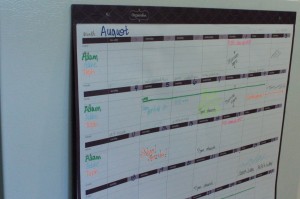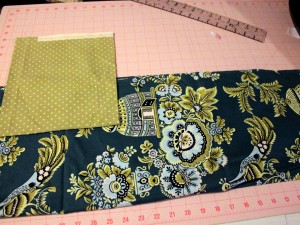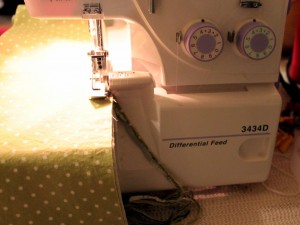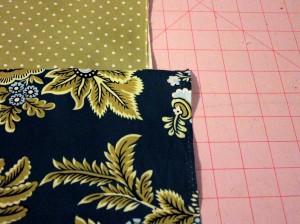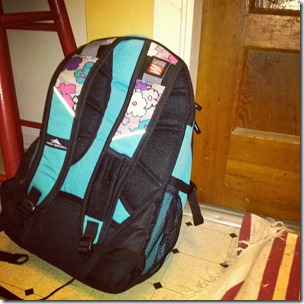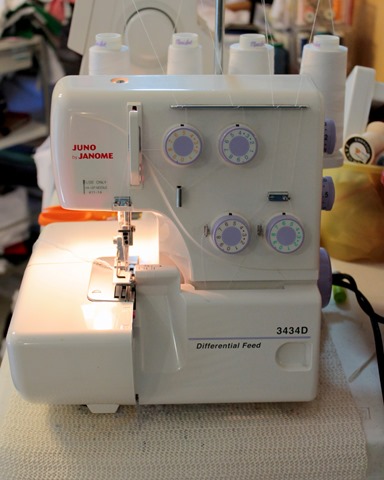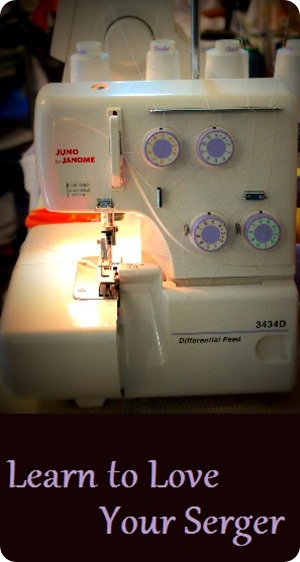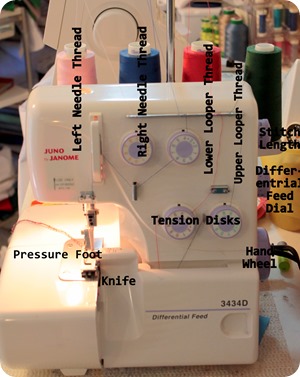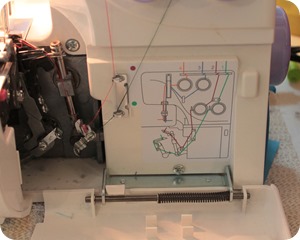Only 7 more days! Seven! And these babies will be in middle school and 3rd grade!
We’re spending the week taking care of a few last-minute chores: the dentist, haircuts, shoe shopping, Six Flags. We are also trying to get our back to school routines up and running! Yuckola.
I’ve researched and searched and fiddled and hemmed and hawed to find a housekeeping/organizational system that works for me. Basically, I’ve discovered it comes down to one thing: JUST DO IT! There is no quick fix and there is no magic bullet to a clean, organized home, especially a small one with a home-sewing business and two busy kids! We’ve developed a pretty good system for chores this summer and I’m hoping to keep it up for this school year. Here’s how we are doing it. For now.
Master calendar:
I use Google calendar for keeping up with everything! Every.Thing. But, the kids can’t easily access it. So, this giant fridge calendar is our fix. Adam and I only list the things on the calendar that effect our whole family (this means evening events only). The kids have a place to record school deadlines, practice times, and such. I also list our dinner plans. No more “What’s for supper?” Woo hoo!
Morning chores:
These haven’t changed must over the years. Get dressed, talk to God, make your bed, pick up your clothes, eat some breakfast, brush your teeth, and be ready for the day.
Everything else:

I use Confident Mom’s Daily Planner to keep track of housekeeping chores. I like it because it reminds me to do the simple things too, like wipe down the light switches or clean the crumb tray of the toaster. I do have to remember to extend a little grace to myself when I miss something.
Daily:

I try to get a load of laundry washed and into the dryer and dinner thawing out before I do much else for the day. The rest of the school day is spent working. I give myself 30 minutes during the school day to do a few chores and the rest happen around 8 at night.
The kids’ chores:
The kids are responsible for unloading and reloading the dishwasher, dumping the compost, and emptying the personal trash cans into the large kitchen trash. In addition, I vacuum their rooms on Tuesday. If I can’t for fear of vacuuming Legos, clothes on the floor, etc, then they lose TV until the next Tuesday. Really, as they only watch TV on Friday nights, this isn’t a loss, but shhh….don’t tell them that!
So…that’s it. That’s the routine we are in and the routine that I’m hoping we can stick to this fall!


